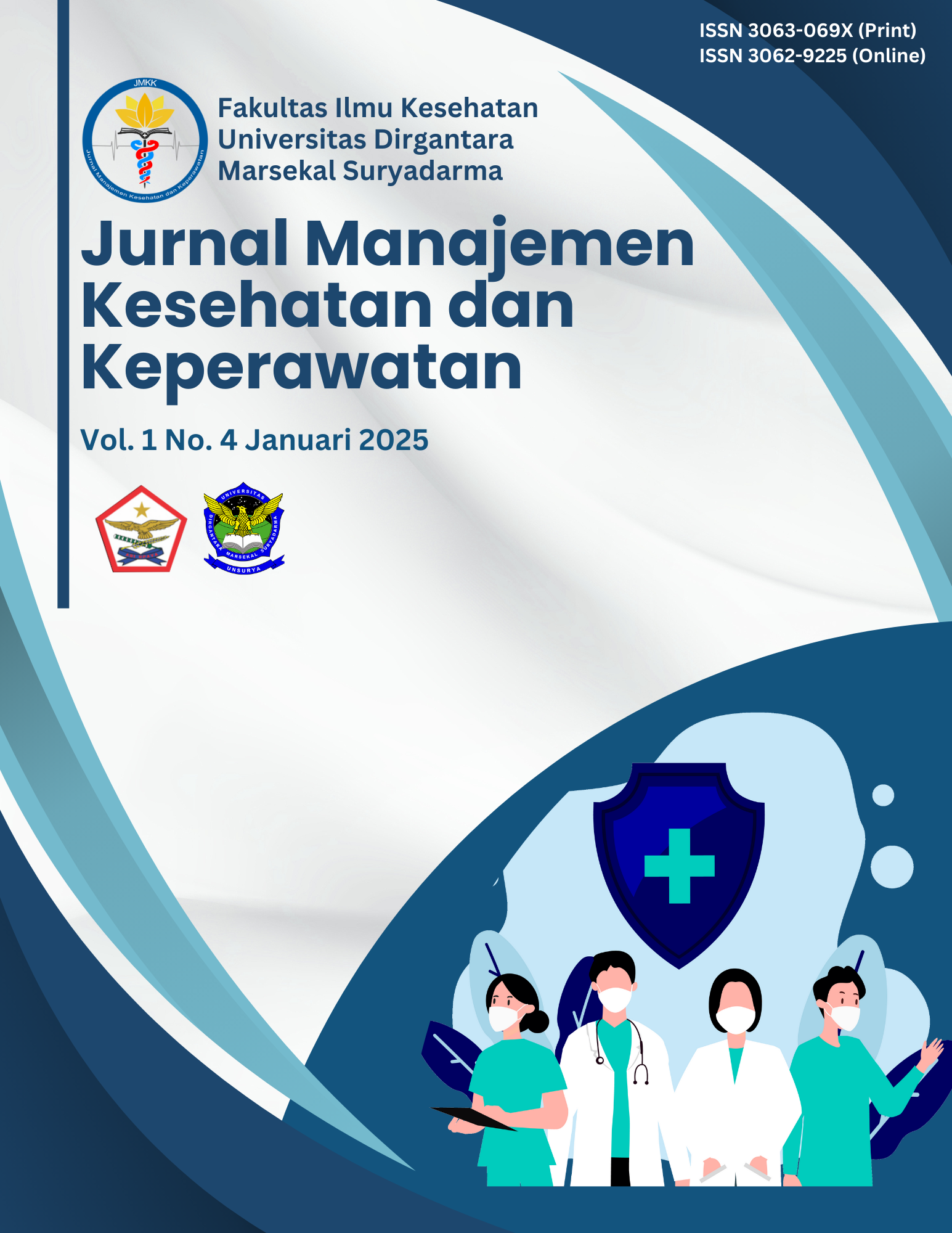Efektivitas Terapi Otot Progresif dalam Mengurangi Kram Otot pada Pasien Hemodialisa di RSAU Dr. Esnawan Antariksa
DOI:
https://doi.org/10.35968/v8gxcx87Keywords:
Hemodialisis, Terapi Otot Progresif, Kram OtotAbstract
Gagal ginjal kronis adalah kondisi dimana peran ginjal menurun dan tidak dapat diperbaiki penyakit ini banyak diderita orang di dunia. Di Indonesia sendiri pada tahun 2018 terdapat 66.433 pasien baru. Salah satu terapi untuk penyakit gagal ginjal kronis adalah hemodialisa. Salah satu masalah yang kerap dirasakan oleh pasien hemodialisa adalah kram otot, sebanyak 46,9% pasien hemodialisa mengalami kram otot. Dalam mengurangi kram otot diperlukan teknik non-farmakologi, yaitu terapi otot progresif. Tujuan penelitian ini adalah untuk mendeskrisikan kram otot sebelum dan sesudah dilakukan Terapi Otot Progresif pada pasien yang menjalani hemodialisa di RSAU Dr. Esnawan Antariksa. Desain penelitian ini adalah deskriptif dengan studi kasus. Penelitian ini menggunakan 2 subyek penelitian. Instrumen penelitian ini dengan alat ukur yang digunakan adalah Cramp Questionnaire Chart. Hasil penelitian ini menunjukan bahwa terdapat penurunan skor kram otot dengan klasifikasi kram sedang menjadi kram ringan. Kesimpulan penelitian ini adalah terapi otot progresif dapat menurunkan skor kram otot pada pasien yang menjalani terapi hemodialisa.
Chronic kidney failure is a condition where the function of the kidneys decreases and cannot be repaired. This disease affects many people in the world. In Indonesia alone, in 2018 there were 66,433 new patients. One of the therapies for chronic kidney failure is hemodialysis. One of the problems often experienced by hemodialysis patients is muscle cramps. As many as 46.9% of hemodialysis patients experience muscle cramps. To reduce muscle cramps, non-pharmacological techniques are needed, namely progressive muscle therapy. The aim of this study was to describe muscle cramps before and after Progressive Muscle Therapy in patients undergoing hemodialysis at RSAU dr. Esnawan Antariksa. This research design is descriptive with a case study. This study used 2 research subjects. The research instrument used for this research is the Cramp Questionnaire Chart. The results of this study showed that there was a decrease in muscle cramp scores with the classification of moderate cramps to mild cramps. The conclusion of this study is that progressive muscle therapy can reduce muscle cramp scores in patients undergoing hemodialysis therapy.













